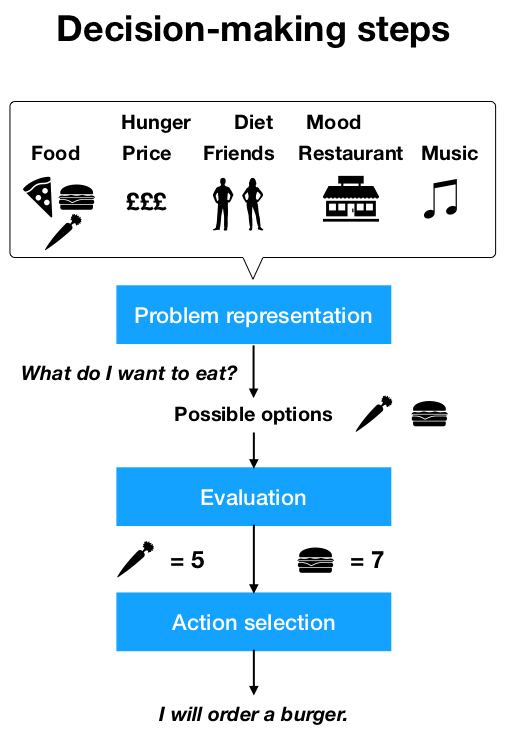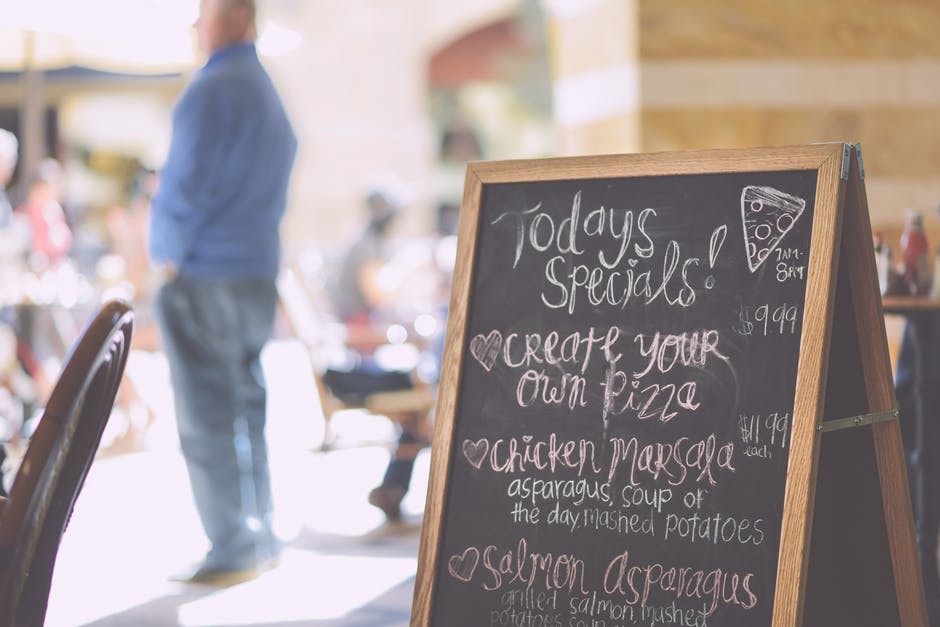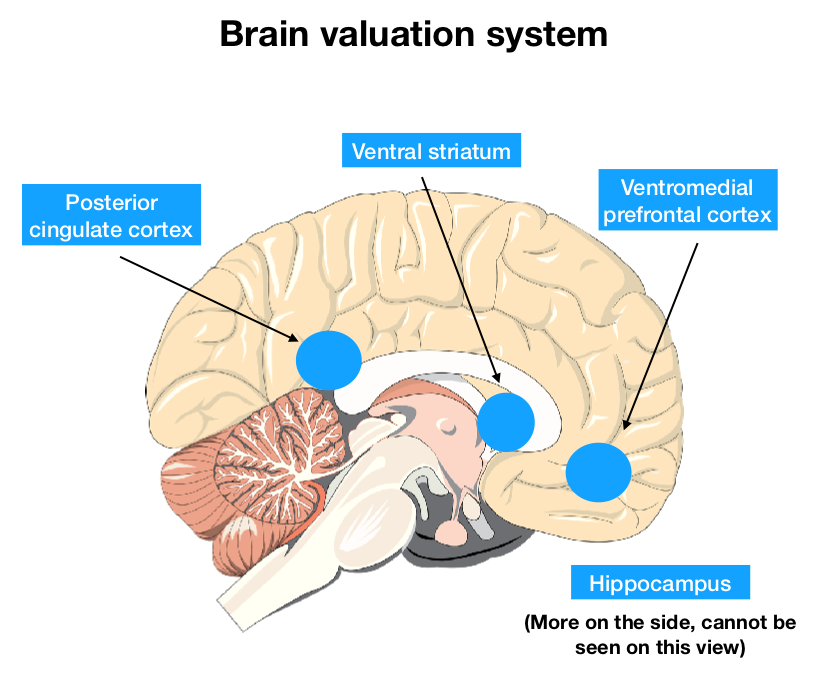We have to make so many decisions every day, sometimes it's easier to make snap judgements about people… But what about the harm this can do? Should we question our instincts? Let's dig deeper...
Is it OK to judge | other people?
Everything is not as it seems...
Once our brain recognises one part of the illusion, it can be really hard for us to see the second part. And it's not just optical illusions that divide opinion, our beliefs, ideas and previous experiences can affect how we see everything.
What’s on the menu?
Let’s imagine that you’re at a restaurant and you need to decide what to eat. This is a very common situation but your brain is doing a lot of things before and during your choice. Most recent theories of human decision-making tell us that to solve this problem, your brain assigns a subjective value to your options (a number that represents how much you like something, for example, the food items on the menu). Your brain then chooses the action which relates to the option with the highest subjective value (i.e. you order the most desirable option).
But let’s take a closer look at what happens in your brain during the 3 steps of the decision-making process (1. problem representation, 2. valuation and 3. action selection). What can influence your decisions at each step?

1. Problem representation
As you sit down at the table and look at the menu, your brain is bombarded by a huge amount of information (the people you’re with, the objects around you, the music, the voices, etc.). Only a tiny fraction of this information will be relevant to what you decide to eat. The brain’s first job is to represent the problem by identifying:
- The question you need to answer (e.g. “what do I want to eat?”).
- The decision parameters i.e. the things you take into account to make your decision. These can be internal (dependent on you and how you feel, e.g. how hungry you are), and external (dependent on the environment e.g. the type of food on offer).
- The possible actions (e.g. the possible orders you could make). The options you consider may depend on your previous experience. For example, you won’t consider all possible combinations of orders because it would be too tricky to memorise them and give each a subjective value. Ordering nothing or having everything on the menu is unlikely to come to your mind as possible options too. In the same way, you may quickly eliminate some options due to specific personal preferences e.g. you don’t like a particular ingredient.
In the end, only a handful of options will be selected to be properly evaluated. Plus, these might be a result of framing effects (i.e. you make different choices depending on how the question is asked). For example, the restaurant might advertise some dishes as “today’s specials” drawing your attention to them and making you more likely to consider them.

2. Valuation
Next, each of the selected options is assigned a subjective value, taking account of the internal and external factors of the problem. This occurs within the brain valuation system (see diagram below) - a network of connected brain areas, which are more activated, the more you like what you evaluate. The valuation phase is:
- Generic: the same brain regions evaluate all types of things (the food, how much you like someone, the atmosphere, the music, etc.) in a common currency (a number you can compare for all types of objects).
- Automatic: you don’t have to consciously ask yourself or be asked how much you like things, your brain does it automatically.
- Context sensitive: the value of an option depends on the environment and how you feel at the time. That’s because your brain evaluates things all the time, so if you’re in an environment that you like (e.g. you’re having a good time with your friends) your brain valuation system is generally more active and the value of the things you evaluate increases.

The valuation systems
It can get a bit complicated because your brain can do different types of valuation depending on the situation. Typically, psychologists consider there to be 3 types of valuation systems:
- The Pavlovian system automatically values a small set of actions proven to be important for survival during evolution (e.g. eating, avoiding threats). For example, it makes you want to eat the food in front of you even if you’re full.
- The habitual system relies on your past experience to make fast decisions. For example, when you go to a restaurant and always order the same thing without asking yourself what you want to eat.
- The goal-directed system evaluates the options depending on their specific qualities and the benefit they might bring. It’s the “deliberate decision maker”, which is a slower process but can be more flexible. It’s the one that’s used when ordering in an unfamiliar restaurant.
3. Action selection
Finally, the values of options are compared and the course of action leading to the highest value is chosen.
The advantage of the first two systems above is that, if you’re in a familiar situation, they allow you to do most things without thinking about it. The problem is that they don’t always lead you to make the ‘best’ choice. For example, you might keep on ordering the same meal even if there are new things on the menu that you’d likely prefer.
But even within an evaluation system, different responses can compete. For example, if you’re very hungry but on a diet, your goal-directed system may tell you that although a cheese burger is more filling and tasty, a salad is better for your long-term aim of losing weight.
Some parts of your brain also control which goals or attributes of the options are more important in different situations. Researchers have shown that people usually prefer using their Pavlovian or habitual system because it’s faster and easier to do. Using the goal-directed system can be a real effort and you’re less likely to do it if you’re tired. You’re also more likely to prefer short-term benefits (eating a burger) to longer-term ones (having a healthy lifestyle) if you’re tired or over-worked.
As we’ve seen, a lot of different things can influence our decisions. For example, marketing techniques, our environment and our mood can shape our decisions, but not always for the best. By being aware of how they change our perception of a situation, we have a chance to make better choices.
Judging a book by its cover: 6 types of bias
Sometimes we put a lot of thought into our decisions, but sometimes we don’t. Very routine decisions can be affected by bias - a preference for or against one person or group, especially in a way that is considered unfair. There are lots of different types of bias, do you think you’ve been influenced by any of these?
- Stereotyping
-
A stereotype is an idea that someone has about a person because they’re a member of a particular group. These ideas can be negative, neutral, or positive, and are often inaccurate. Stereotypes based on gender, race, or sexuality are common in many societies. Some psychologists think that humans evolved the tendency to stereotype because it gave them an adaptive advantage. Living in groups was a benefit to survival as it made it easier to mate, care for children and protect one another. This group living made humans cautious of outsiders, as they could steal from or harm the group. Developing the ability to distinguish between members of our group and outsider groups may have been a protection mechanism in the past, but nowadays it can lead to unnecessary hostility between groups. Negative stereotypes, also known as prejudices, can develop into discrimination. For example, a manager might have the misguided belief that people of other races are less hardworking, and so only hire people that share the same race as them. This is illegal discrimination. Laws in the UK, set out the 2010 Equality Act, protect people from being discriminated against because of their race, to help limit the effect prejudices can have.
-
- Stereotype threat
- Stereotype threat describes the risk that a person’s behaviour or ability might change to follow certain negative stereotypes about their group. Several famous experiments have demonstrated how stereotype threat can affect performance. Jeff Stone, a Professor of Psychology at the University of Arizona, and his colleagues wrote a paper in 1999 about the effect of stereotype threat on sports performance. They tested white and black students’ skills with a golf task. The students were split into three groups and each given a different description of the same task. Group 1 were told the task was designed to test natural athletic ability, Group 2 were told the task would test their “sports intelligence”, and Group 3 (the control group) was told the task tested general sports performance. Black participants in Group 2 (sports intelligence) did much worse than black participants in the control group. In comparison, white participants in Group 1 (natural athletic ability) performed worse than white participants in the control group. There is a stereotype that white people are more intelligent and black people are more athletic, and this experiment demonstrated the negative effect this stereotype can have on performance.
- Confirmation bias
-
Have you ever been frustrated trying to persuade a friend or family member to change their opinion? No luck even though you presented them with lots of evidence? They were probably struggling to overcome their confirmation bias. This bias emerges when we really want something to be true. We convince ourselves, even when we’re presented with information that casts doubt on that view. Confirmation bias can present a problem in police investigations. Early on, police officers might come up with an idea of how they think a crime occurred, and who is guilty. They will want to search for evidence that supports their idea but must make sure they consider other scenarios. You might also have noticed that little information is reported on the news during an ongoing investigation. This is to make sure the potential jury isn’t influenced. Lawyers will try to find members for the jury who don’t know anything about the case so that they’re not influenced by their confirmation bias. However, this has become a big challenge in the 21st century when news is spread so quickly on social media!
-
- In-group bias
- Do you have lots in common with your group of friends? Do you like the same TV shows or sports teams? In-group bias is the tendency humans have to prefer people who are in the same ‘group’ as them. This can be anything from racial and gender groups to Manchester City supporters and Ed Sheeran fans. There are a few theories for why this bias exists. One explanation, called realistic conflict theory, suggests that we favour those in our group when there is competition for resources. If everyone is fighting for the same resources, the group benefits if they favour members of the group over outsiders. A famous experiment to demonstrate this theory was conducted by Muzafer Sherif, a Social Psychologist. The study, called the Robbers Cave experiment, took a group of 22 boys from similar backgrounds to a mock summer camp. In the beginning, the boys were split into two groups and spent the first week bonding. In the second week, the two groups competed for prizes in various activities, like tug of war and baseball. The groups developed negative feelings towards each other, and started name-calling and sabotaging one another. In the final week, the groups worked together in tasks that required teamwork, without competition. This final stage significantly reduced the friction between the two groups. What do you think - do you see similar behaviours in the real world?
- Out-group homogeneity effect
- This theory sounds complicated – but it can be broken down very simply! We’ve already referred to in-groups, which are the groups we belong to. Out-groups are all the groups which we aren’t part of. Next, the word homogeneity comes from the word homogeneous. You may have come across this term in science, it simply means ‘of the same kind’. Putting this together, the Out-group homogeneity effect is the perception humans have that people in other groups (Out-groups) are all very similar, while people in their own groups are very different. This is sometimes the case when it comes to religious groups. Some religious people assume that all members of another religion are alike, but think their own group is diverse. In relation to this effect, some evidence has also been found to suggest that people can better recognise the faces of members of their own race than members of another race. This theory is known as the cross-race effect and can be a problem for police when they are relying on an eye witness that is a different race to the suspect.
- Fundamental attribution error
- Have you ever been annoyed at a friend because they didn’t reply to a text…then found out their phone had no battery? As humans, we have a tendency to blame someone’s actions on their personality, rather than their environment. We don’t always consider the other possible factors to explain someone’s behaviour. This type of bias can cause real issues for certain groups. When someone is unemployed, others in society will often say they’re lazy, unintelligent or lack ambition. These snap judgements get in the way of understanding the real reasons for unemployment, which could include disability, caring responsibilities or a poor education. Because people make these quick assumptions, they’re often unwilling to support those in need – and think others only have themselves to blame. Taking time to reflect on and overcome our biases can help encourage acceptance and understanding. Do you think you’ve made any snap judgements recently? How could you overcome these biases in the future?
Phillip Pullman, bestselling English writer, once wrote: “People are too complicated to have simple labels.”
Phillip Pullman, bestselling English writer, once wrote: “People are too complicated to have simple labels.”
Stop and search: does it work?
Stop and search is a common practice used by UK police, but is it reducing crime? And are police officers able to avoid their bias? Dr Alpa Parmar, from the Centre for Criminology at The University of Oxford, explains how racial bias can play a role in crime and policing.
Is it OK to discriminate?
Discrimination occurs when people act upon their negative biases (also known as prejudices) and treat a person or particular group unfairly. Is it ever possible for discrimination to be justified?
Is it OK to judge other people?
-
Trusting your instincts
We tend to prefer the Pavlovian valuation system when making decisions because it’s fast and easy. Our brain automatically values a small set of actions proven to be important for survival during evolution (e.g. eating, avoiding threats). If we were confronted by someone holding a weapon, it would be pretty sensible to judge them as dangerous and run!
-
Stereotypes can be damaging
Stereotype threat describes the risk that a person’s behaviour or ability might change to follow certain negative stereotypes about their group. Students in a famous experiment conducted by Professor Jeff Stone in 1999 performed worse in tasks they believed tested a skill members of their racial group were stereotypically bad at.
-
Keeping people safe
Discrimination might be necessary in certain situations. For example, having medical restrictions (bungee jumping when pregnant isn’t a great idea!), age restrictions (we don’t want toddlers flying planes!), height restrictions (you wouldn’t want to fall out of your roller-coaster seat!).
-
It can lead to distrust
Criminologist, Dr Alpa Parmar (University of Oxford) explained that police stop and search practices can create a bad feeling amongst communities who feel unfairly targeted. This might reduce the trust and confidence they have in the police and mean they're less likely to report incidents whereby they've been victims of crime themselves.
-
Levelling the playing field
As Vlogger Hank Green discusses in his Philosophy Crash Course, sometimes discrimination can make up for past injustice. We might think certain groups who have been historically discriminated against could use the advantage, and we usually focus our goodwill on helping out those that need it most (like when we donate to charities that help people in certain, less privileged parts of the world).
-
More than just a label
Phillip Pullman, bestselling English writer, once wrote: “People are too complicated to have simple labels.” There are so many different things that make up a person’s identity, and often when we judge people we are focusing on just one small part of their background or personality. As the old saying goes "don't judge a book by its cover".